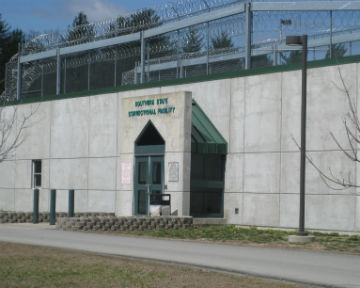
The American prison system has long been a source of controversy. Calls for criminal justice reform further contribute to opposition to the prison system, as many see its poor conditions as increasingly dismal as they are experienced by those who, in the eyes of much of the population, should not be imprisoned in the first place. In his recent book, former Editor in Chief of The Review Devon Kurtz makes his own contribution to the array of critiques of the prison system, but in doing so adopts a different focus from that of the standard prison reformer. In Sketches from Behind Prison Walls, Kurtz, along with illustrator Rein Kolts, focuses on the humanity of prisoners in the Vermont prison system and explores how incarceration distorts the lives and personhood of those subjected to it. Kurtz entreats the reader to understand the incarcerated. He asks us to think not just of the morality of incarceration or the question of punishment, but of how the nature of our system of carceral punishment fundamentally alters the individual.
In the book, Kurtz collects the writings of several of Vermont’s incarcerated and ties them together with Kolt’s depictions, and his own commentary endeavors to explore the nature of the incarcerated and the effects of incarceration upon them. The inmate’s writings are usually in the form of free verse poetry, conveying emotion as well as the concrete details of their lives behind bars. Rather than fixate entirely upon their experiences in prison, the inmates, and Kurtz’s commentary, tend to detail their broader life stories and focus in on a few particular details relevant to the effects of the prison system. These details are in turn often directly reflected in the illustrations present, indicating either the physical consequences of incarceration or reflecting the emotional ones in the expression of each subject.
The book is divided into four main sections, each intended to explore an aspect of the prison system’s emotional and spiritual impact upon those remanded into its custody. The first, Indignity, covers some of the oft-discussed aspects of harsh treatment common within the prison system. Inmates in the section talk of denial of medical care, overcrowding, poor sanitation, and the common practice of shuffling prisoners between prisons with little to no warning or agency afforded to the incarcerated.
However, the section is not so much about the poor treatment itself, but rather its effect on the self-conceptualization of the affected inmates. The section’s title emphasizes the dehumanizing nature of such treatment, and how it affects the self-conception of the incarcerated. Kurtz argues that humanity is not merely a physical attribute, but a state of being that is, at least in its conventional manifestation, contingent upon the recognition of it in a person by others. The inhuman treatment of the imprisoned therefore, in the book’s view, necessarily dehumanizes those subjected to it.
The later sections of the book focus more on the psychological and emotional consequences of incarceration. The second section, Loss, considers imprisonment as a separation, from the world and people outside of prison. In the chapter, Kolts sketches prisoners who speak of the various deprivations suffered as the result of their incarceration, in most cases the loss of a personal connection of some kind. These connections range from parental relationships to bonds between lovers, and all are weakened by the physical and emotional distance imposed by prison. One prisoner speaks of a partner who broke off contact with him after his incarceration, seemingly turned away from their relationship by the subject’s status.
The final section of the book, titled Death, opens with Kurtz noting how death becomes a new kind of freedom for the incarcerated. Freedom from the confines of the body, and, of course, from those of incarceration. The section features many inmates who expect to die in prison, and places the moment of death in an almost hopeful, if uncertain, light. Contrasted with the promise of drudgery and confinement that prison offers, death, while uncertain, promises at least a kind of freedom. Those inmates featured in that section speak of hope mixed with resignation, with those resigned to living out their lives in prison hoping that death will bring at least some measure of escape.
Kurtz’s work is a critique not of a particular practice of the prison system or element of its conditions but of the practice of incarceration itself. At a basic level, it is a consideration of humanity, and the social components necessary to it. Kurtz considers the relationships and environmental aspects necessary to the maintenance of a dignified sense of self and explores how prison removes or perverts them to turn the incarcerated self-conception against itself, causing the incarcerated to view themselves as the animals the prison system treats them as.
However while Kurtz does aptly demonstrate the dehumanizing nature of the prison system’s totalitarian isolation of its subjects, he does not offer an alternative to the practice of incarceration. Further, while the inmates certainly present a poignant case against aspects of the carceral system, the fact remains that their present states result from their criminal actions. While Sketches from Behind Prison Walls does much to humanize the incarcerated, it does not offer a way to balance the need for just consequences for harmful criminal action against valid concerns for the treatment of those remanded to the custody of the prison system.

Be the first to comment on "Behind Vermont Prison Walls"